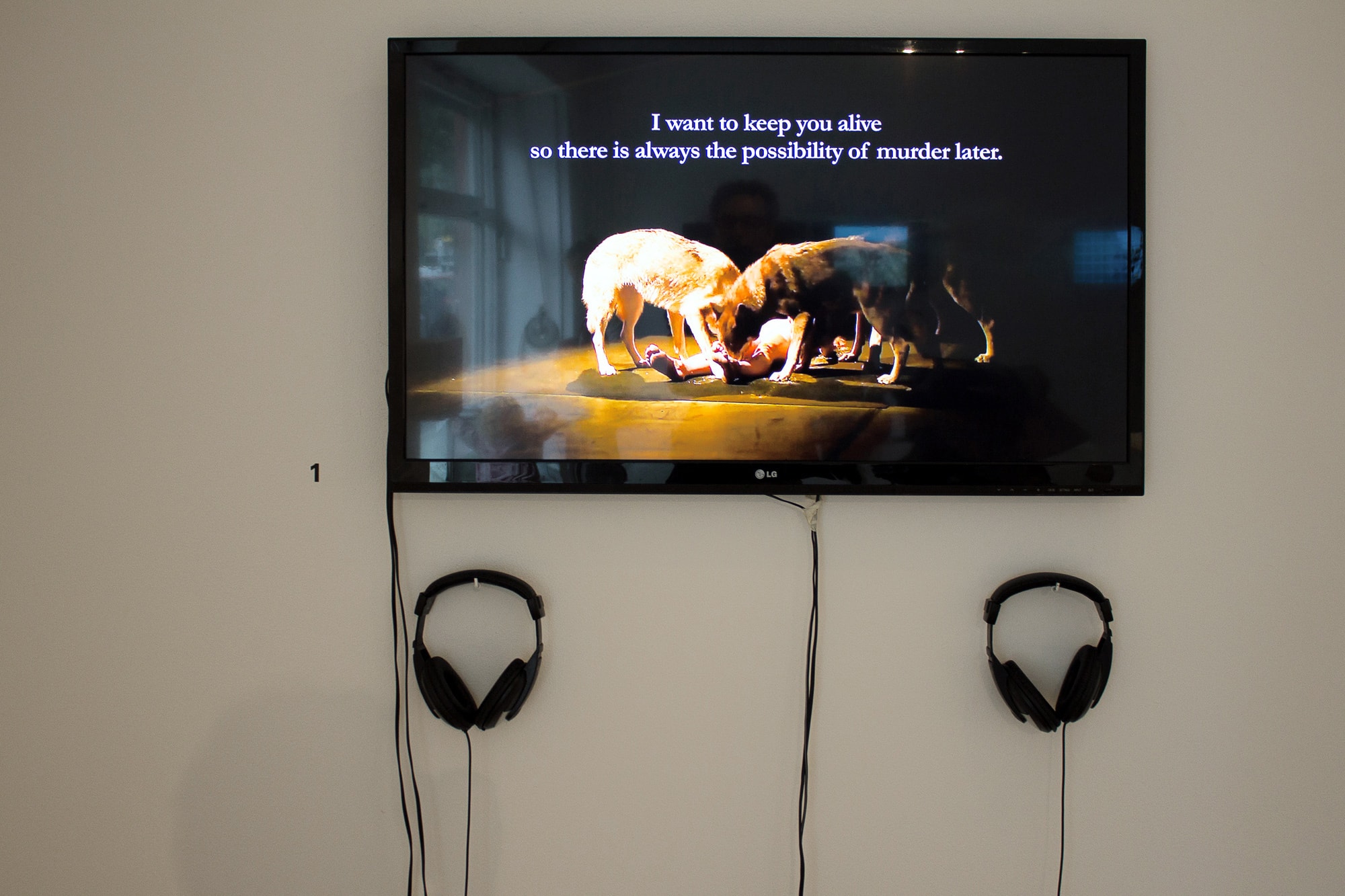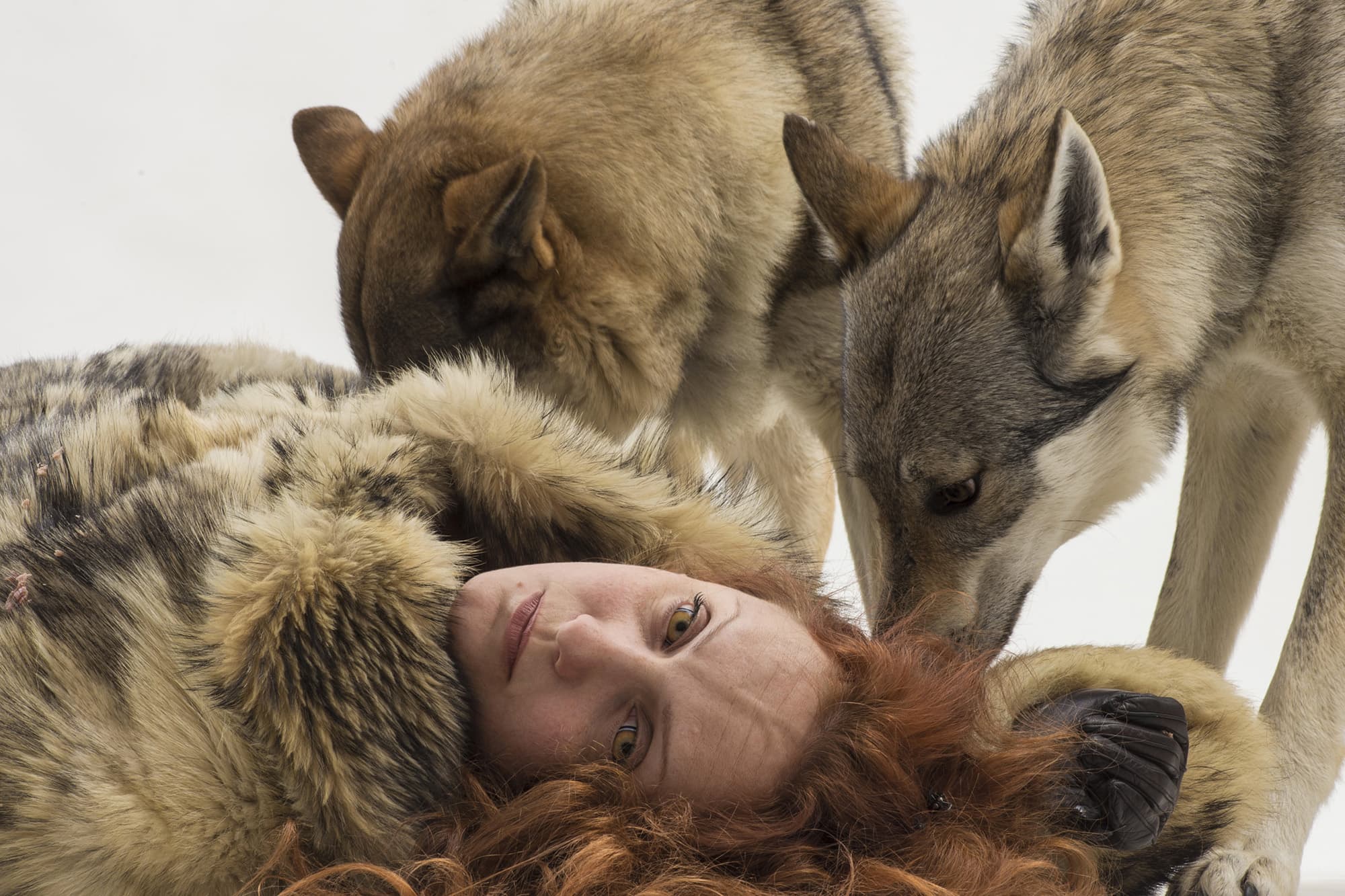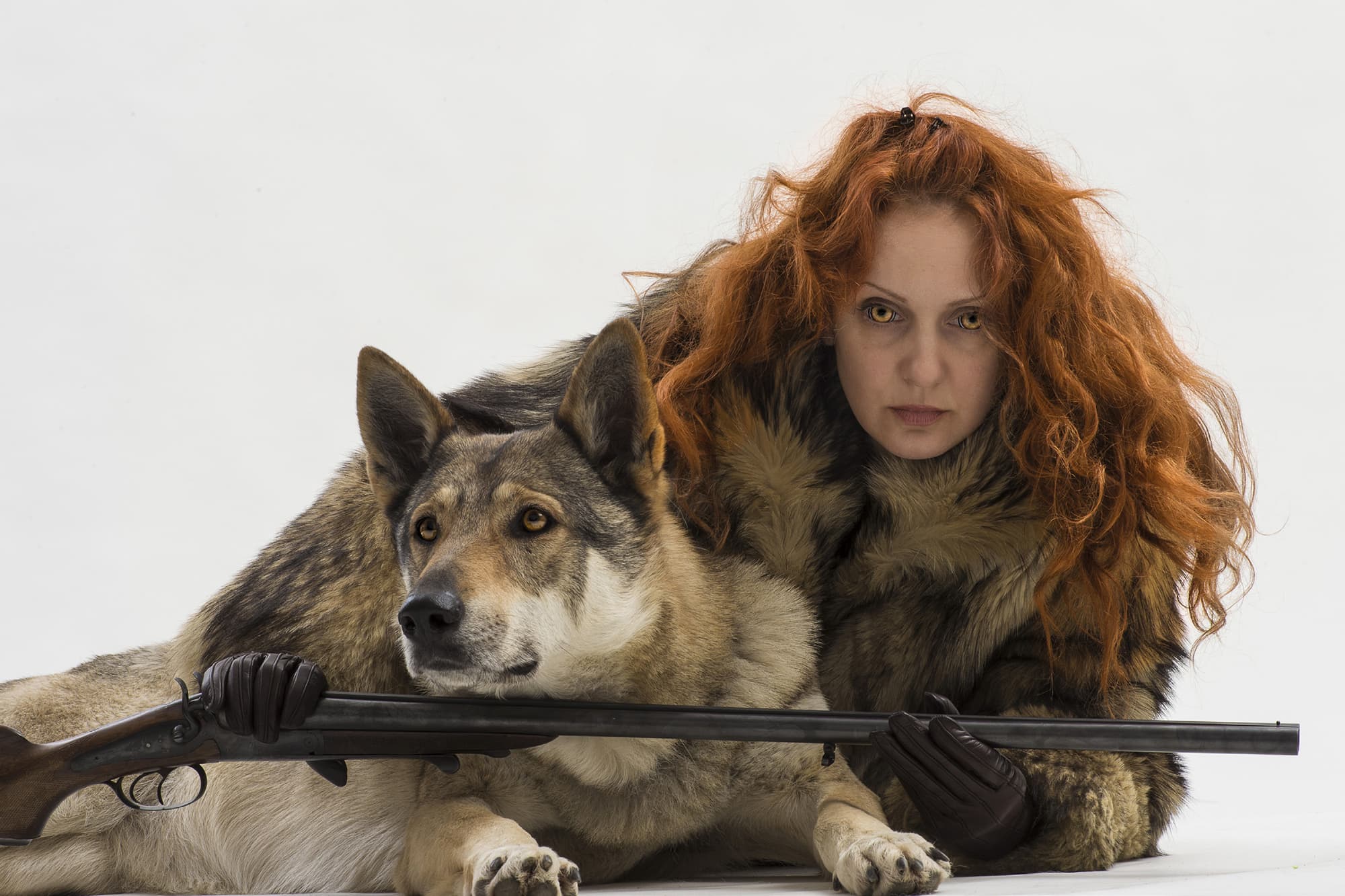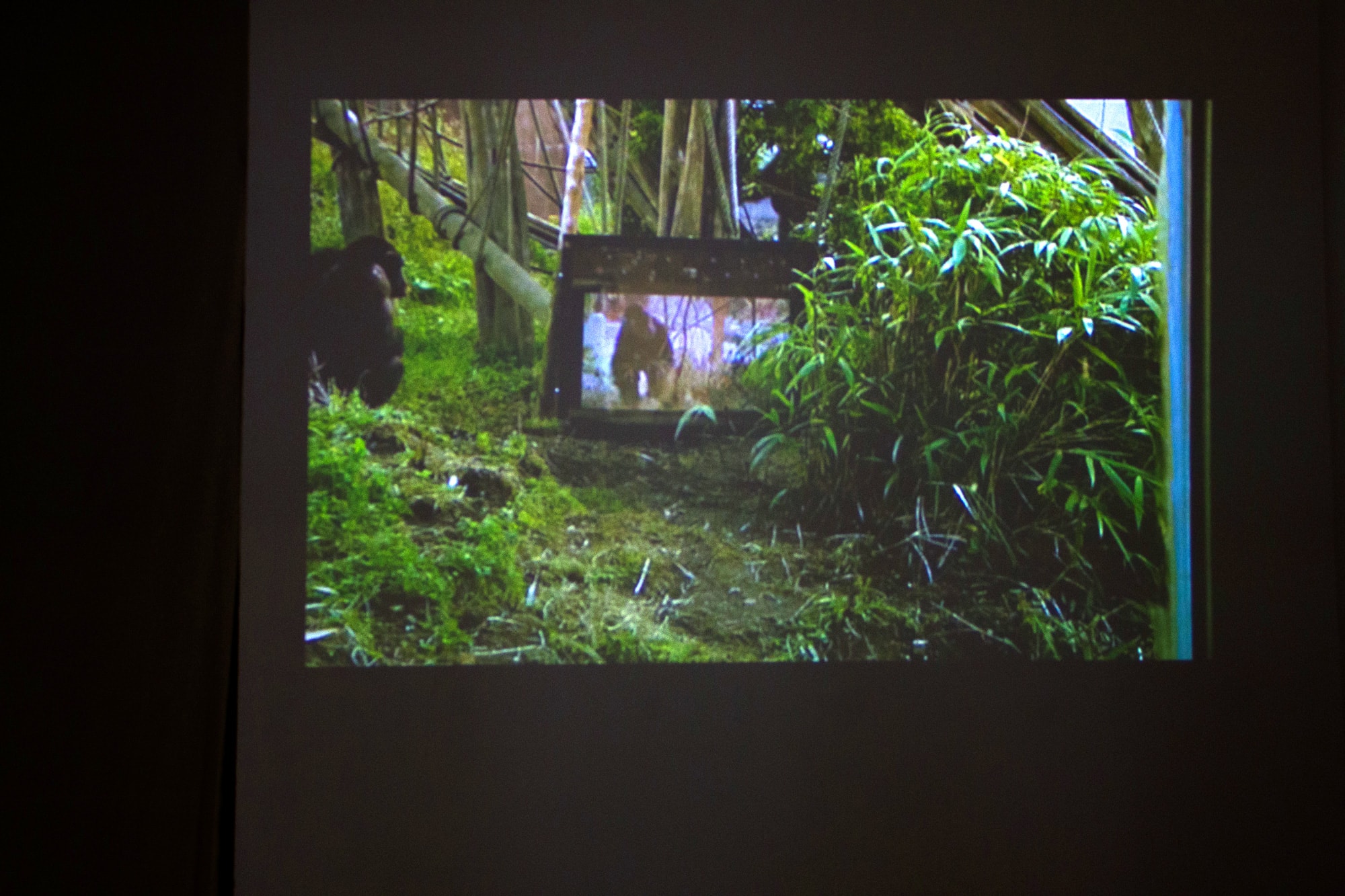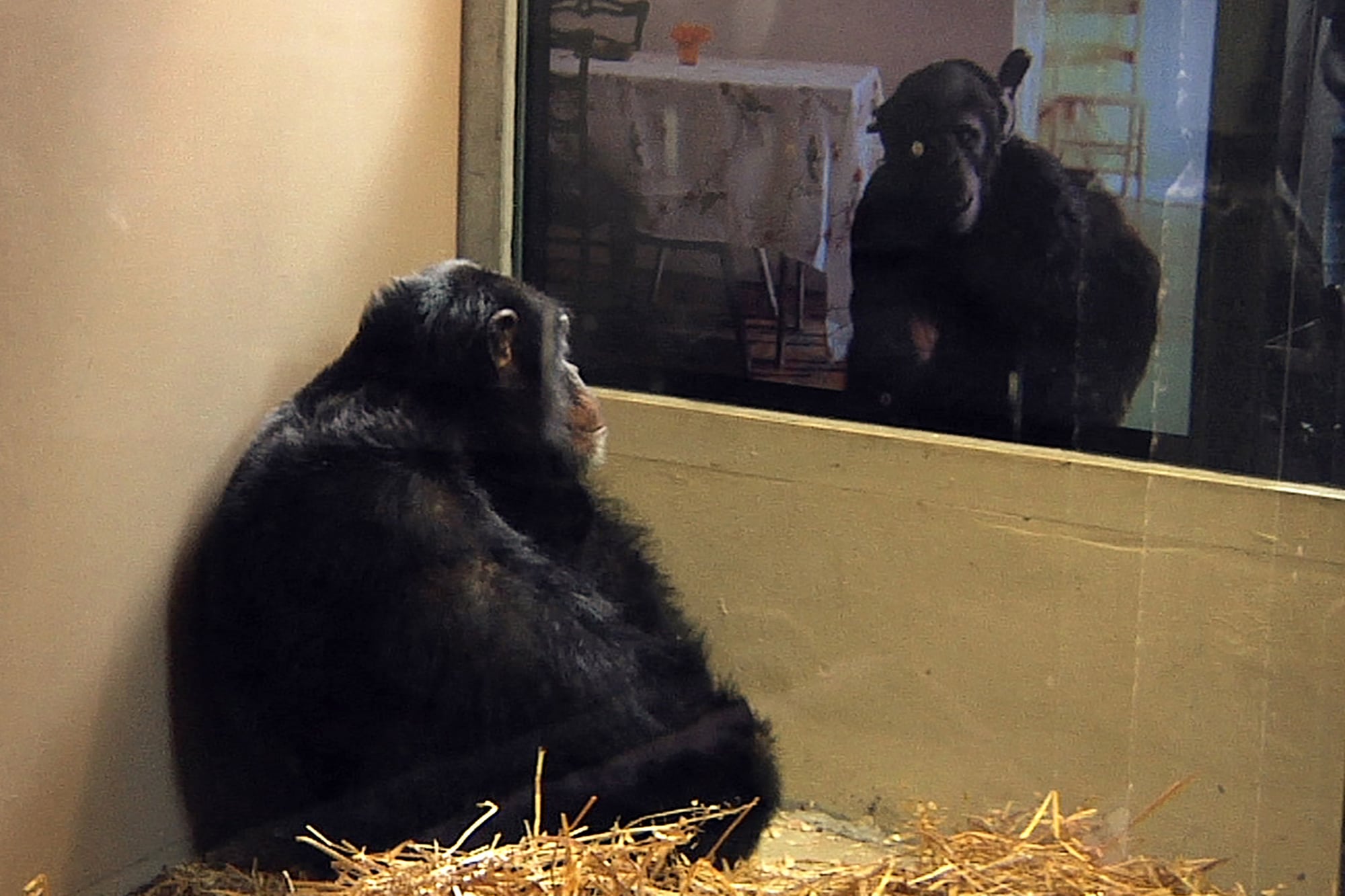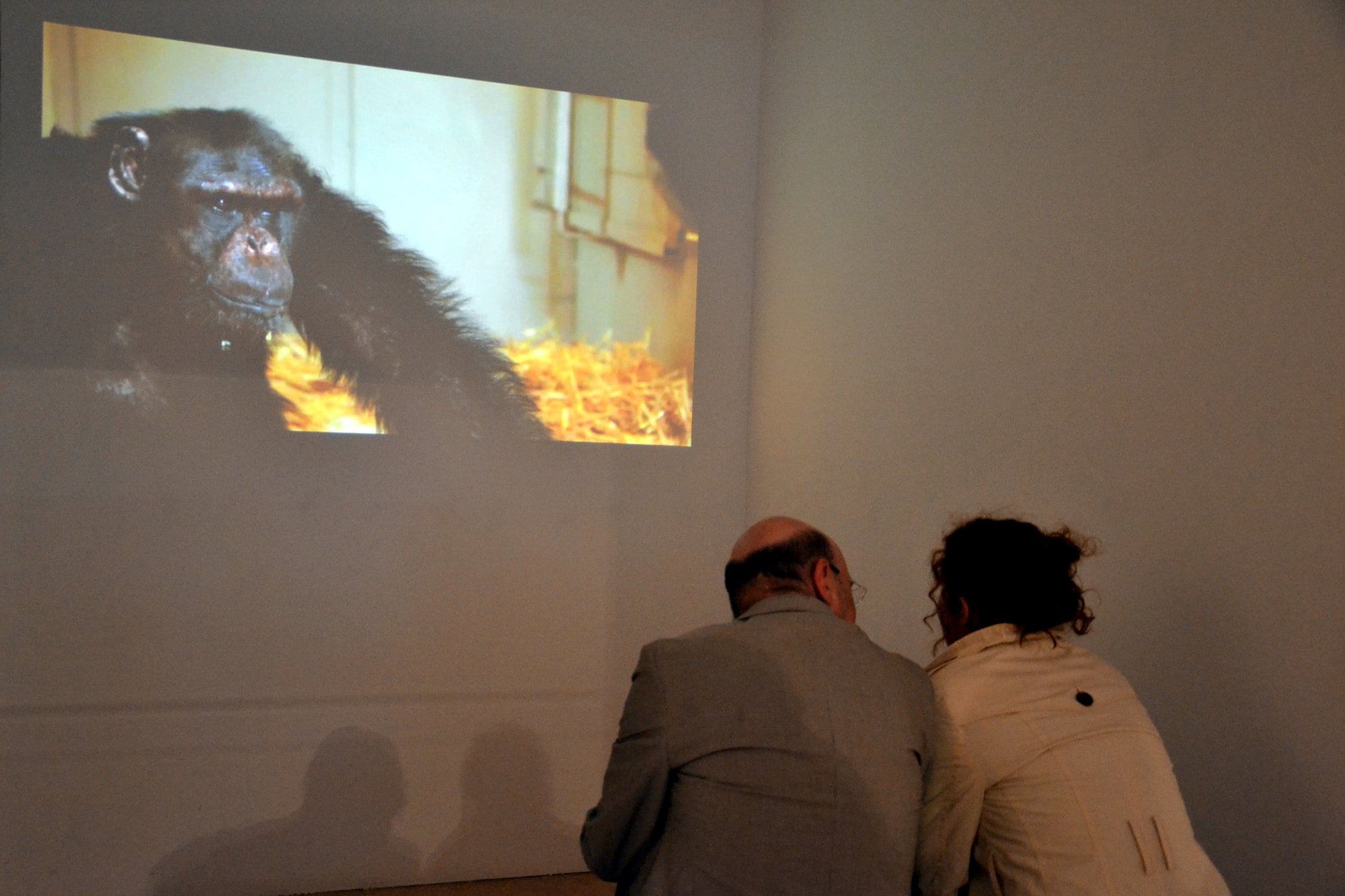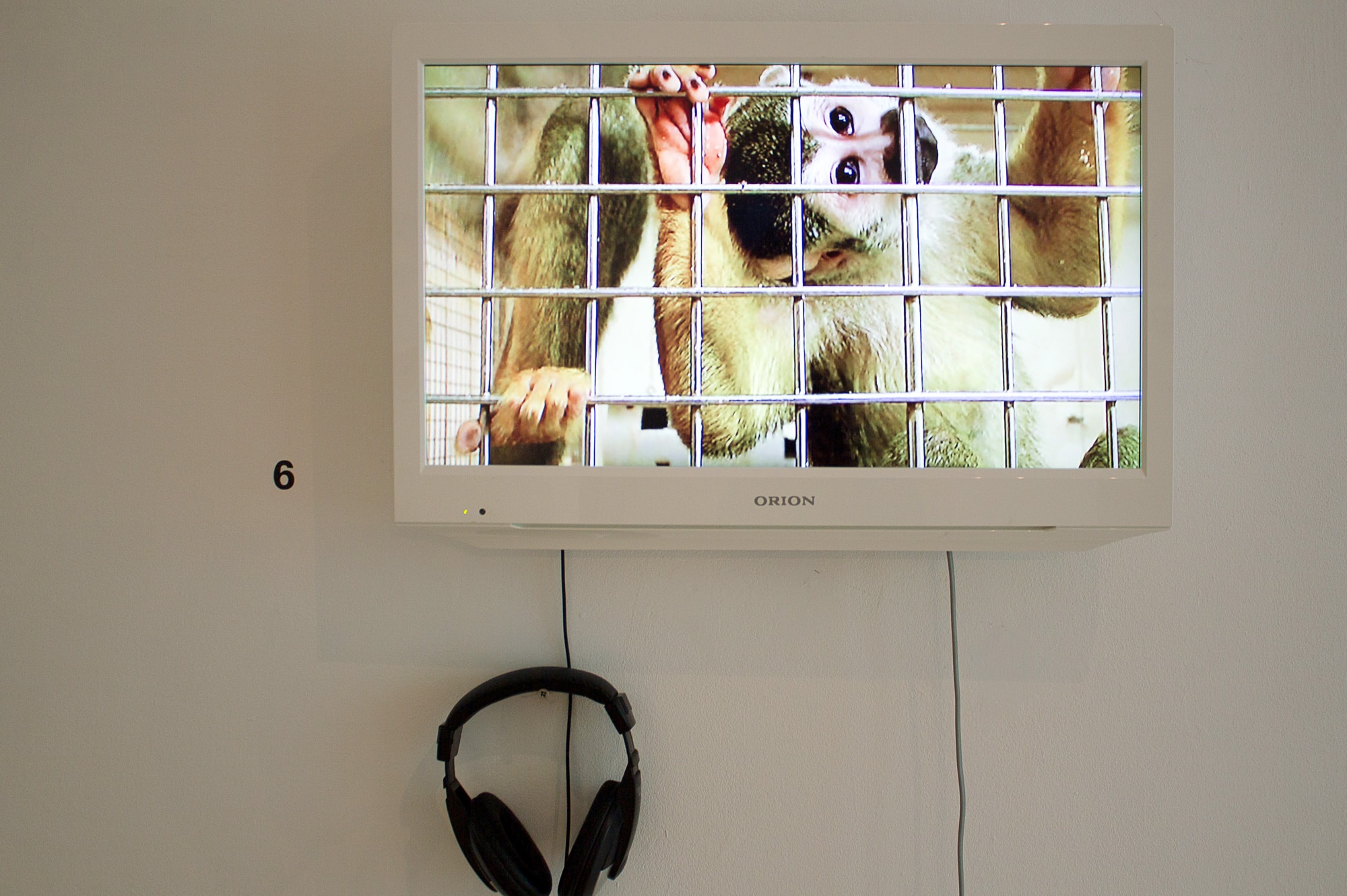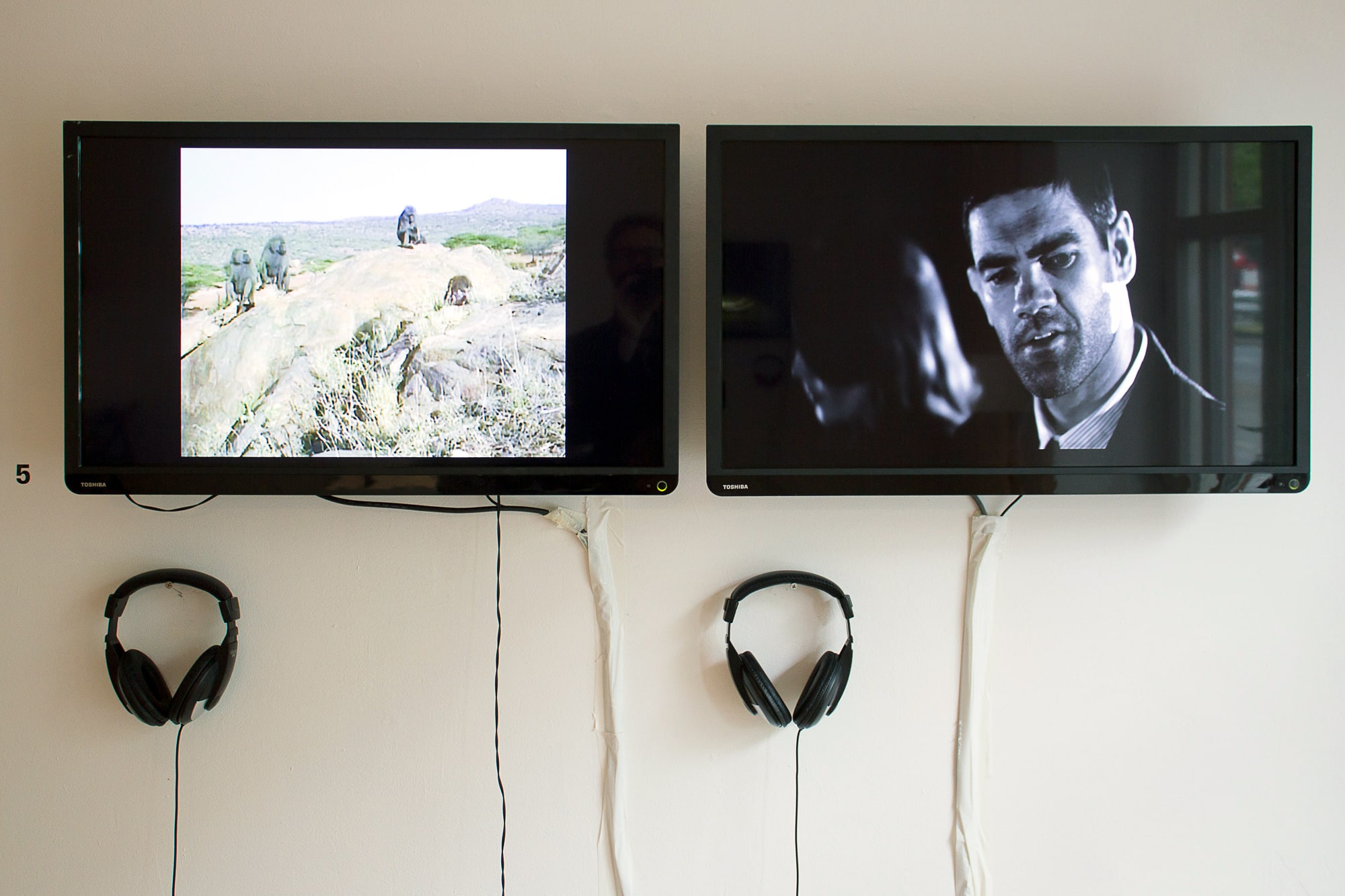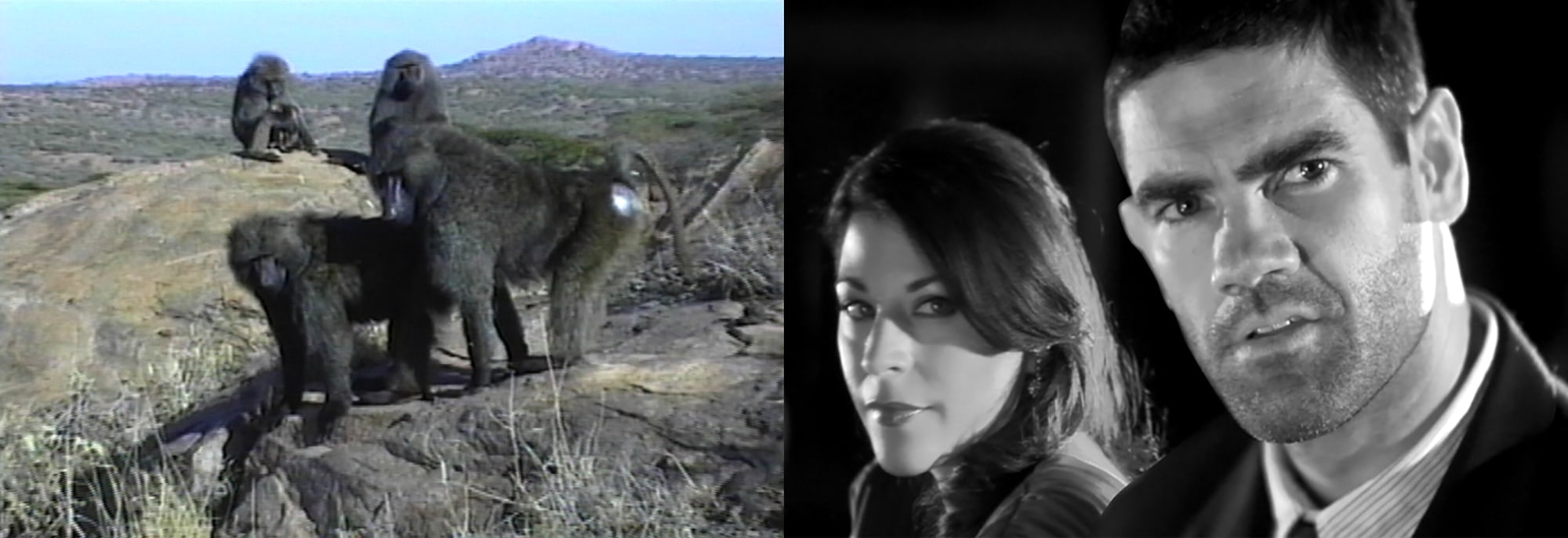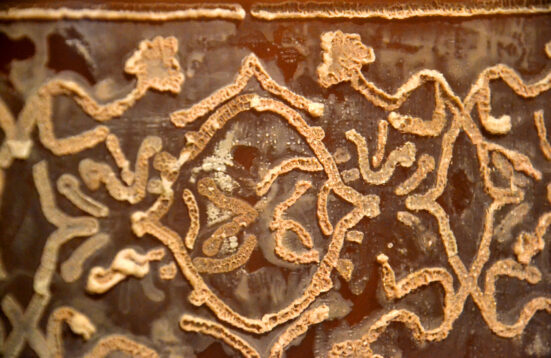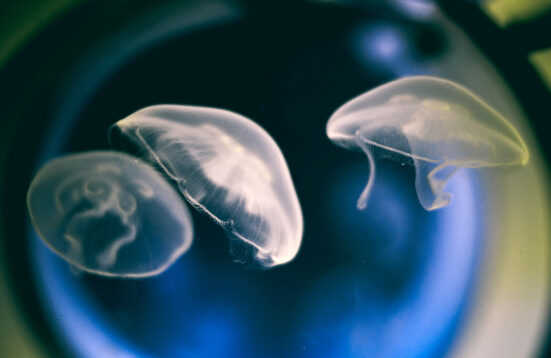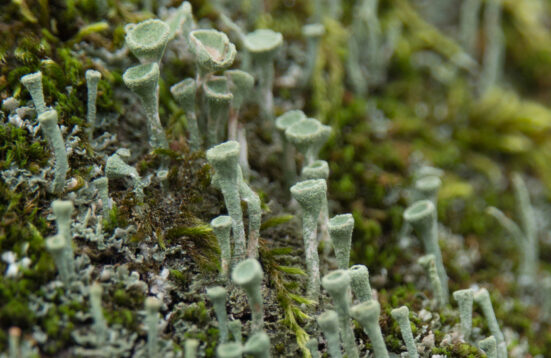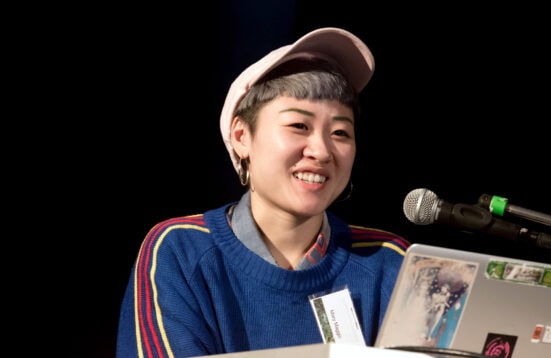Nonhuman Subjectivities
On Animals. Cognition, Senses, Play
Rachel Mayeri | Maja Smrekar
Art Laboratory Berlin is pleased to present the new series Nonhuman Subjectivities. Based on current philosophical theories of the object and a critique of anthropocentrism, our attention is focused on non-human actors. This show presents recent works on the two groups of animals that are closest to us: primates, our nearest ‘relatives’, and dogs, with whom we have made a symbiotic contract. The works share Donna Haraway’s concept of “cooperative actions”: overcoming conventional dichotomies of nature/culture, human/animal or subject/object is all about joint action.
The exhibition On Animals. Cognition, Senses, Play presents two strong artistic positions on primates and on the wolf-dog-human continuum, making use of certain narrative strategies and the phenomenon of immersion, to approach the perspective of a nonhuman counterpart. The works of both artists place the instinct and the senses of the nonhuman at the centre of artistic research, while aiming to translate the nonhuman cognitive ability by means of the performance, film and art/science collaboration.
Maja Smrekar’s performance I Hunt Nature and Culture Hunts Me was developed during a research residency at the Jacana Wild Life Studios in St. Montaigne, France. It forms the second part of the artist’s project K-9_Topology in which the artist investigates the phylogenetics of the wolf, the wolf-dog-human relationship and animal ethics. During the performance, the implied risk and intimacy of Smrekar’s contact with two wolfdogs and one wolf is contrasted by a voice reading texts from Joseph Beuys, Oleg Kulik, Susan Silas and Smrekar herself. In addition, a documentary film, part of Smrekar’s research, also explores the complex evolutionary story of the canine.
In her work Ecce Canis, the first work of her series K-9_Topology, she explores the metabolic pathway processes that trigger emotional motifs, and bind humans and dogs enabling them to successfully coexist together. The installation, some parts of which are exhibited here, contains serotonin from both the artist and her Scottish border collie Byron. This has been transformed by chemical protocols into an odour – the chemical essence of their human-canine relationship.
The two tubes on the wall are normally used in biochemstry as protein columns, but in Smrekar’s installation Ecce Canis they function as serotonin filters: the two tubes, labeled “K9” and “M7,” were used to filter the individual serotonin out of the blood platelets of Byron and Smrekar respectively. On the plinth we encounter different samples of a scent derivative of human and dog metabolism. Indole, an aromatic organic compound used in the perfume industry, is also (as tryptophan) the final derivative of the serotonin pathway (and exists not only in the brain, but also in flowers). In this case it is the mixture of Maja’s and her dog’s serotonin, combined and synthesized with indole.
“The interaction of biology and culture is the central concept in the understanding of human evolution, geographical dispersion, diversity and health”, says Smrekar: “Within this frame, I am interested in metabolic pathway processes that trigger the emotional motifs which connect two species, humans and dogs, [and allows them] to successfully coexist together.” (Maja Smrekar).
The films of Rachel Mayeri are the result of years of collaboration with primatologists. In her series Primate Cinema, Mayeri has made films for (and about) chimpanzees and other primates. The fact, that captive chimps commonly watch video as a form of enrichment has not previously been explored by artists. In Apes as Family (2012) we watch a drama based on a tale of both chimpanzee social customs and domestication. While, as humans, we find the plot emotionally compelling, we also become caught up with watching the reactions of a chimpanzee audience watching the same film on a large TV (the first time the film was shown to chimps in the Edinburgh Zoo). Indeed the film is both an example of ‘Primate Cinema’ – a film made for nonhuman primates, and the complexities of cross-species understanding.
Mayeri intensely researched chimpanzees’ reactions to different television genres and consulted primatologists, and came to the conclusion that: “Chimps seem to like to watch the same things as human primates – dramas around food, territory, social status, and sex. By watching a movie through chimps’ eyes, we can imagine what they think and feel. Chimps are, after all, our closest relatives. Known for their complex social, cognitive and emotional lives, they also share with us a fascination with cinema.”
Mayeri’s film Baboons as Friends (2007) juxtaposes footage of baboons with a re-enactment by human actors, who translate a tale of lust, jealousy and deceit from the animal to the human. On the left we watch field footage of baboons in Kenya, that was shot by primatologist Deborah Forster, who explains this tale of desire and betrayal. On the right monitor, Mayeri has filmed a sort of Human re-enactment with professional actors in a film noir setting.
For her video Movies for Monkeys (2012) Mayeri intended to produce a film that would appeal to a more distant audience: the squirrel monkey. This primate is thought to have a very short (two second) attention span. After a number of experiments, Mayeri found the right subject matter, exploring the magic connection between time, visual based media and primates along the way.
Regine Rapp & Christian de Lutz
Press Reviews
Nonhuman Subjectivities. Rachel Mayeri und Maja Smrekar bei ArtLaboratoryBerlin by Dr. Barbara Borek in art-in-berlin.com
Neue Ausstellung der Reihe „Nonhuman Subjectivities“ im Art Laboratory Berlin: „On Animals. Cognition, Senses, Play“ von A.L. in www.human-animal-studies.de

